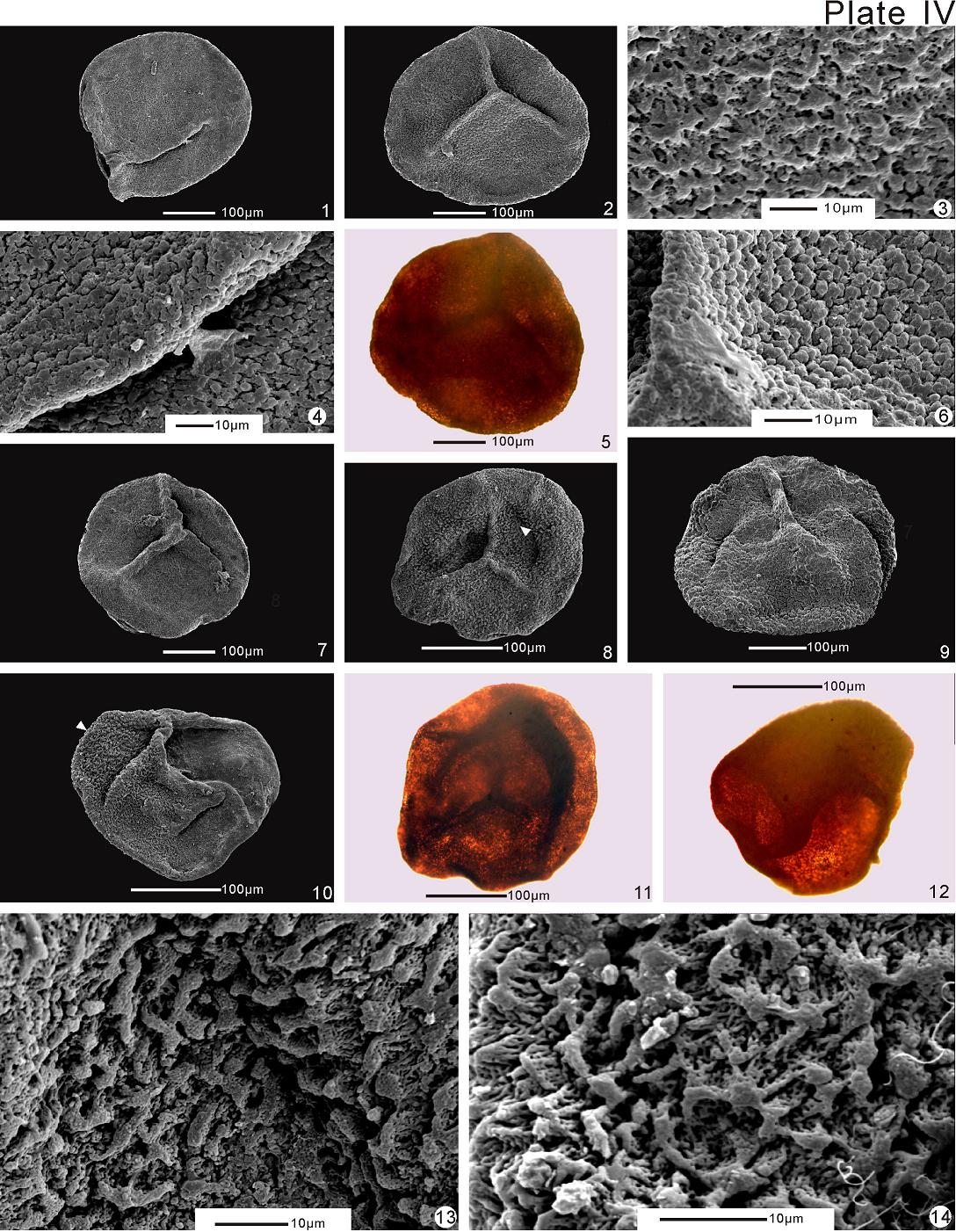A new progress in the research of Palaeozoic dispersed megaspores in north China was made by Dr. LIU Feng, Professor ZHU Huaicheng and Professor OUYANG Shu from Nanjing Institute of Geology and Palaeontology Chinese Academy of Sciences (NIGPAS) recently.
Well-preserved megaspores are described for the first time from Pennsylvanian to Late Permian strata of the Baode region in Shanxi province, North China. A total of 20 species in 13 genera are described. Using first appearances of selected megaspore species and changes in species abundance in the succession, four megaspore assemblage zones can be recognized. Comparison with already known in situ megaspores indicates that the parent plants of the dispersed megaspores were mainly lycopods and this in turn indicates their likely palaeoenvironmental significance. Selaginella-like herbs and subarborescent lycopods which were low in abundance compared with arborescent lycopods in the early Pennsylvanian appeared to have become prevalent from the Late Pennsylvanian in northern China. However, some arborescent lycopods (mainly sigillarians) still played an important role in the Permian coal forming plants of the region. Several Carboniferous megaspores characteristic of Euramerica persist into the Mid Permian in North China, indicating that a warm and humid climate prevailed in this area during Pennsylvanian to Roadian, whereas the climate of Euramerica had already become arid by the end of the Carboniferous. This warm and humid climate in northern China made it a refuge for some typically Euramerican Carboniferous plants. From Roadian, with the disappearance of coal and marine sediments together with the appearance of red beds, the MS megaspore zone progressively changed to the G zone. This probably reflects the adaptation of the parent plants to a more and more arid climate.
Paper reference: Liu Feng, Zhu Huaicheng, Ouyang Shu, 2011. Taxonomy and biostratigraphy of Pennsylvanian to Late Permian megaspores from Shanxi, North China. Review of Palaeobotany and Palynology in press. (doi:10.1016/j.revpalbo.2011.03.001)

Photo of dispersed megaspores
Download:
